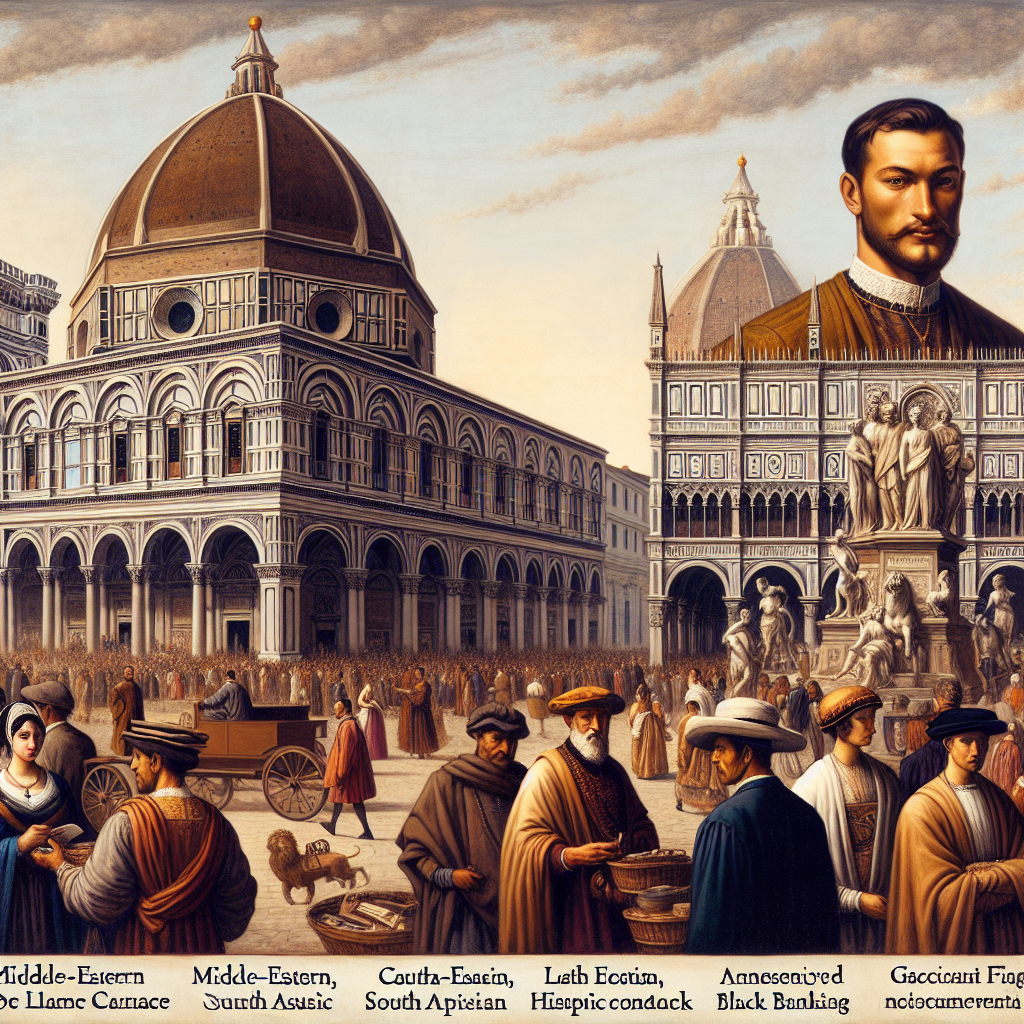The Influence of Renaissance Banking Families, Like the Medici
When we think of the Renaissance, images of sublime art, groundbreaking science, and mighty architecture often come to mind. Yet, behind this flourishing era were influential banking families, particularly the Medici, whose financial prowess sculpted much more than the economy. Join us as we explore how these families left an indelible mark on history, culture, and even economics.
The Rise of the Medici Family
The Medici family sprang from relatively humble beginnings in the late 14th century but soon rose to prominence. With shrewd business tactics, they transformed their small banking endeavor into one of the most powerful financial institutions in Europe. Under Giovanni di Bicci de’ Medici, the bank solidified its wealth and influence, which were later expanded by his son, Cosimo de’ Medici. Hence, the Medici didn’t just manage money—they controlled it.
Economic Impact and Innovations
The Medici Bank introduced several financial innovations that changed the way banking was practiced. One of the significant contributions was the development of double-entry bookkeeping, which revolutionized financial accounting. They also pioneered the use of letters of credit, thereby facilitating international trade. By establishing branches in major cities across Europe, the Medici created one of the first truly global banking systems.
- Double-entry bookkeeping: Allowed for more accurate financial records.
- Letters of credit: Simplified international trade.
- Global banking branches: Created a broad-reaching financial network.
Patronage of the Arts
The Medici family are perhaps best remembered for their patronage of the arts. Cosimo de’ Medici and his descendants, including Lorenzo the Magnificent, used their vast wealth to support artists, sculptors, and architects. Icons like Michelangelo, Donatello, and Botticelli flourished under Medici patronage, establishing what we now cherish as Renaissance art. In essence, the Medici financed a cultural renaissance as well as an economic one.
Political Influence
With great wealth comes great power, and the Medici were no strangers to politics. They deftly maneuvered through the political landscape, both in Florence and beyond. Through strategic marriages and alliances, they secured influential positions and, at times, even papal seats. The Medici turned their financial capital into political clout, thereby altering the course of history. Their influence extended to creating an era of stability and prosperity in Florence, which allowed arts and culture to flourish.
The Legacy of Renaissance Banking Families
While the Medici are the most famous, other Renaissance banking families like the Fuggers and the Bardi also wielded significant influence. These families showed that finance could be a vehicle for broader societal change. Their legacies live on today, not just in the realms of art and architecture, but in the very fabric of modern banking and economics.
Curious minds seeking to delve deeper into the intricacies of financial history and modern economic theory may find it helpful to explore various resources. For continuous updates and analysis, you might consider subscribing to some of the best economic analysis Telegram channels.
Conclusion
The influence of Renaissance banking families like the Medici extends far beyond their financial achievements. They were architects of an era that saw the confluence of wealth, power, art, and culture. Their legacies remind us that behind every great era lies the unseen yet powerful force of economics. So the next time you admire a Renaissance painting, remember that a banker might have made it possible!
For those who wish to stay updated with the latest in economic news and analysis, don’t miss the chance to subscribe to top economics Telegram channels.
Who knew banking could be so artful?
